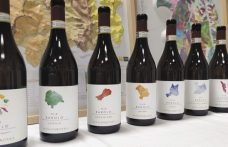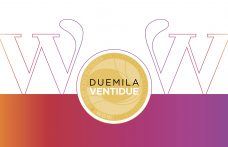
DOC and DOCG wines. Style cannot be imposed by “rules”

Do not confuse typicity with origin. At the centre of the debate on what remains of the foundations of the Italian designations, four wise men from the wine world agree on one point. However, today like in the past, the different (and sometimes opposite) routes leading to the concept of “typical” at the basis of DOC and DOCG wines seem to be not only relative, but also difficult to express.
Tipicity in DOC and DOCG wines
Beppe and Tino Colla, Ezio Rivella and Riccardo Cotarella have helped us to outline a fascinating and sometimes philosophical idea, from the start of Italian quality winemaking to the present day. For every winemaking region, a precise sensory expression is required (and indicated…) in the production regulations. But is it still possible today to embrace the concept of typicity in a geographical region set down by the production regulations?
Rivella: typicity is not synonymous with origin
“In Italy there has always been a lot of confusion,” explains Cavaliere Ezio Rivella, “between typicity and origin, something that has always been damaging, right up to present day. Right from the 1924 legislation, and even more so in 1932 when the first Consortia for typical and fine wines were sanctioned, typicity was placed above origin according to the French idea, demonstrating that the latter concept had not been grasped. This misunderstanding also led to confusion when drawing up law no. 830 in 1963. The legislators of the period said “typical wines, with a loyal and constant character, well-defined for the consumer,” explains Rivella, “a standardization suitable for industrial production, but absolutely not for a DOC wine, which changes from vineyard to vineyard and from vintage to vintage. That there is a similar style and taste is taken for granted, but it is totally wrong to lead all DOC production to wines that are all the same.”
Colla: also the vineyard, the grape and the vintage are decisive
When Beppe Colla, one of the fathers of Barolo together with Cavallotto and Ratti, among others, drew the boundaries of the designation as we know it today, he had to take on the responsibility of tracing an imaginary dividing line between who was inside or outside that was difficult to explain at the time. “The fundamental reasoning,” Tino Colla, Beppe’s brother, reminds us, “was to make typicity the basis of everything. But typicity is linked to the vineyard, grape and vintage as well as the designation. The production regulations can give the number of plants, non-northern slopes, altitude, quantity, etc, but they can’t standardise it, there isn’t a formula, it is left to the common sense of those making it and common sense is hard to come by. At the time, however, there were not the interests that there are today.”
Read the full article on Italian Wine Chronicle 01/2016! You can buy the last issue in our shop (also in digital edition) or write to store@civiltadelbere.com
Enjoy the reading!
See also ...




The battle continues with the new Chianti Gran Selezione
On 11th November, the Chianti Wine Consortium announced Read more
